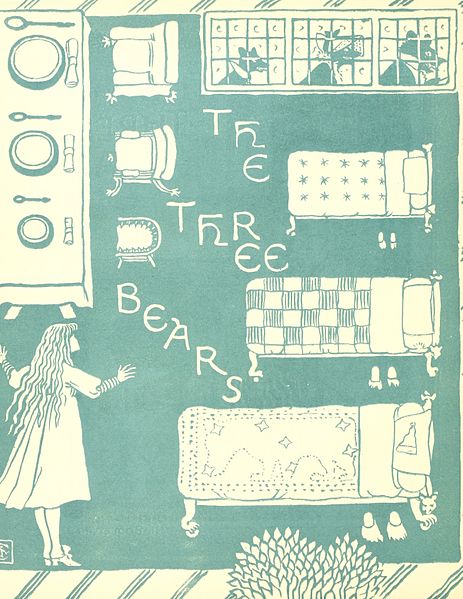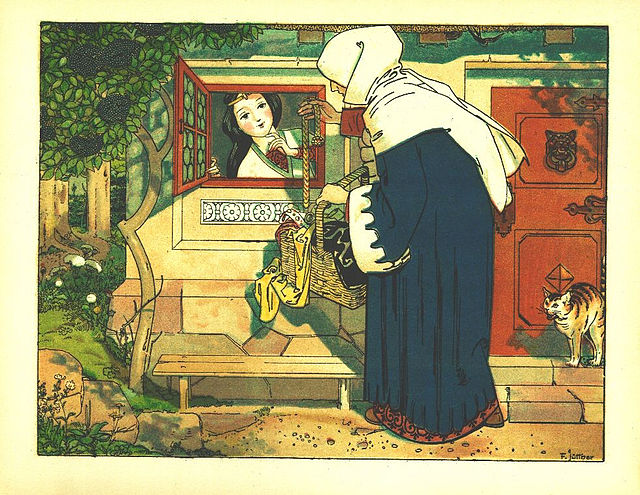Goldilocks and the Three Bears
"Goldilocks and the Three Bears" is a 19th-century English fairy tale of which three versions exist. The original version of the tale tells of an impudent old woman who enters the forest home of three anthropomorphic bachelor bears while they are away. She eats some of their porridge, sits down on one of their chairs, breaks it, and sleeps in one of their beds. When the bears return and discover her, she wakes up, jumps out of the window, and is never seen again. The second version replaces the old woman with a young, naive, blonde-haired girl named Goldilocks, and the third and by far best-known version replaces the bachelor trio with a family of three.
The story has elicited various interpretations and has been adapted to film, opera, and other media. "Goldilocks and the Three Bears" is one of the most popular fairy tales in the English language.
Illustration by Arthur Rackham, 1918, in English Fairy Tales by Flora Annie Steel
Illustration in "The Story of the Three Bears" second edition, 1839, published by W. N. Wright of 60 Pall Mall, London
The rule of three is a writing principle that suggests that a trio of entities such as events or characters is more humorous, satisfying, or effective than other numbers. The audience of this form of text is also thereby more likely to remember the information conveyed because having three entities combines both brevity and rhythm with having the smallest amount of information to create a pattern.
The story of Goldilocks and the Three Bears uses the rule of three extensively, with the protagonist examining three sets of three items in a house, finding only the third of each set to be satisfactory
Snow White receives three visits from her wicked stepmother.
Cassandre's advertisement for Dubonnet aperitif uses wordplay and a progression of three items.





